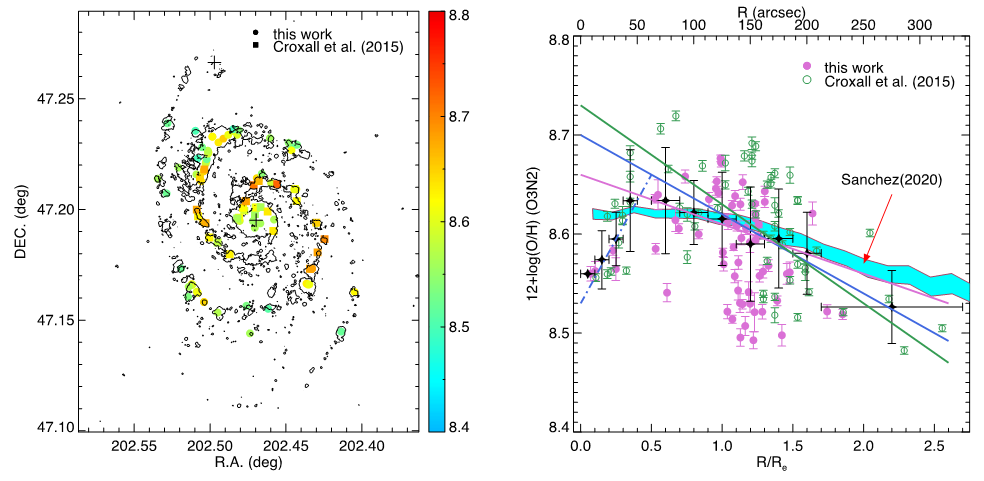Interstellar dust is formed in the outer atmosphere of red giants, planetary nebulae, supernovae, and also in the general interstellar medium. Interstellar dust is a key galaxy component. Studying dust emission helps us to probe the star formation activity obscured by dust grains and thus to understand how galaxies evolve through time (Galametz et al. 2014).
One or multiple MBB models have been used to study the dust properties and possible submm excess (Rémy-Ruyer et al. 2013; Galametz et al. 2014; Rémy-Ruyer et al. 2013; Juvela et al. 2018; Lamperti et al. 2019; Liang et al. 2019; Nersesian et al. 2019 ). In fact, most of the submm excesses reported in the literature are based on MBB fitting with β=2 (Rela?o et al. 2018). As a 2MBB model with a standard emissivity index, βc=2 is a good approximation to a physical dust model (Galametz et al. 2014; Rela?o et al. 2018), we use 2MBB model withβc=2 to study the dust properties and find possible submm excess at 850 μm.
We select 13 nearby spiral galaxies from the NGLS project (Wilson et al. 2012) to explore their global properties, probe potential 850 μm excess, and try to constrain the global properties of galaxies where submm excess tend to occur. We find that NGC 2976, NGC 3351, and NGC 4631 show a submm excess at 850 μm. Emission from non-dust components (such as CO(3–2) line emission, free–free emission, and synchrotron emission) are definitely not the cause of the submm excess for these spiral galaxies. Our results suggest that (1) the spiral galaxies with colder dust temperature are prone to show submm excess at 850 μm. (2) The 850 μm excess emission is more easily detected in spiral galaxies with low cold dust mass and faint total IR luminosity. (3) A spiral galaxy with low stellar mass tends to show submm excess. (4) The submm excess becomes more obvious as the stellar mass decreases. (5) The submm excess also becomes more common with decreasing oxygen abundance (see Figure 1).

Figure 1. Correlation between the ratios of the observed-to-modeled 850 (870) μm flux density and the total stellar mass (left panel), oxygen abundance (middle panel), and total IR luminosity (right panel) in the case of βw=2.0 with βc=2.0. The red squares identify our galaxies with 850 μm excess. The green squares represent galaxies of Galametz et al. (2014) with 870 μm excess. The black and blue squares show remaining galaxies of us and Galametz et al. (2014), respectively. The gray lines represent error bars. The orange lines linear-fitted show the trend of variations.
Article: https://iopscience.iop.org/article/10.3847/1538-4357/aba52f/pdf
Contact: ZHOU Jianjun
Xinjiang Astronomical Observatory, Chinese Academy of Sciences
Email: zhoujj@xao.ac.cn